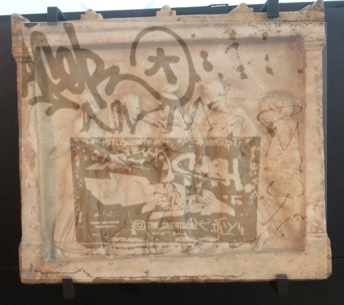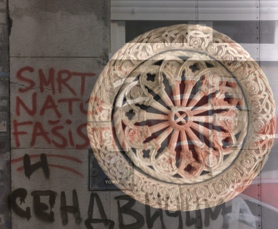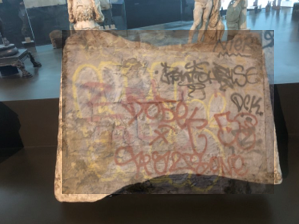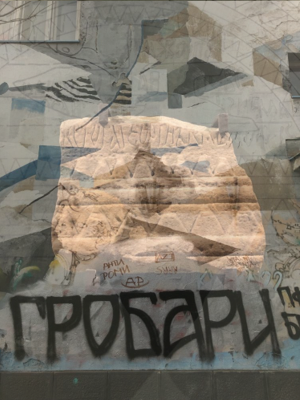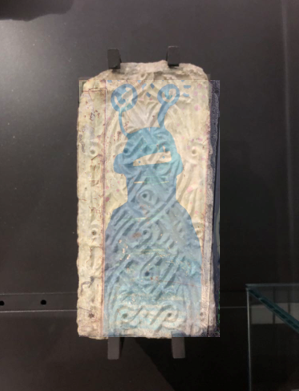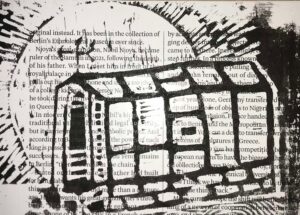

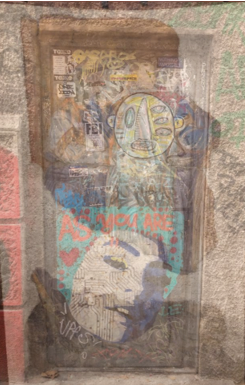
Life is an endless cycle of death and rebirth. You don’t see this celebrated as openly as the walls of city streets. Here an ongoing dialogue is taking place all around us, an open conversation between strangers. It gets painted over and then redrawn. Different colors, shapes, letters , languages , names, sometimes incompressible due to the many people choosing the same place to speak. Cities with an abundance of graffiti often have something to say, the people who live there taking any route possible to express themselves, even if that means ‘defacing’ property. The act of graffiti is in itself a rebellion against private property, who should decide where art belongs and what forms of creative expression are legitimate? Throughout history this decision has often been left to the elites, those in possession of assets, material or otherwise. These days artists are attempting to reclaim the definition in their own was , taking to the streets as a way of undermining the institutions who previously held art hostage , afraid of what might happen if it escaped and everyday people realized they could use it to tell their story.
The first thing I do when I come to a new city , before getting a coffee or finding the closest market , is check resident adviser. RA is any music appreciators holy bible, in it like testaments of good places with great music. From here I often go on a deep dive , looking up the divine locations they list, stalking their messiahs on Instagram. One club caught my eye – drugstore. On Thursday they had a club night with all the proceeds going to the students striking in Novi Sad (I wrote an article about these protests and have attached it to the email.
My pres always run overtime, even if its just me making dinner listening to a new mix and having a quiet beer with one of the hostels volunteers. When you are in charge of your own schedule, plans never run to time, which is why Serbia’s free bus network is a major attraction to any creature of the night. Running down the street half to the bus station is a great way to start any night out. You sit down and observe the other people hoping that cute guy with a carbineer is going to the same place as you, wondering if that girl eating a yiros is starting her night or just finishing it. Drug store is inconspicuously hidden away in Belgrade’s industrial zone , the only thing giving it away is the pulsating music you hear approaching the warehouse and a single staircase winding up the graffiti stained side.
And he dreamed, and behold, there was a ladder set up on the earth, and the top of it reached to heaven. And behold, the angels of God were ascending and descending on it! And behold, the Lord stood above it and said, “I am the Lord, the God of Abraham”
Rather then white these angels were dressed in all back , sunglasses poised on their heads like a halo. The first room you entered resembled a foyer where the lounges had been pushed to the side , making room for the double decks and stacked speakers that took centre stage. David Lynch (rest in peace) inspired zig zags covered the floor , welcome to the red room they said . A guy and girl were playing a b2b techno set , lucid blue circles expanded and contracted on the bricked wall where various tags had been sprayed. The overall vibe was grungy but the atmosphere felt incredibly current, confirmed by the youthful crowed that had gathered in the foyer Tuborg in hand. Entering further into the warehouse you could find another room that represented the more traditional side of Belgrade’s night scene. It seemed like someone had just placed a table in the middle of old theatre , red velvet curtains spilled from the roof pooling behind the DJ who was playing a set of pure vinyl. Pulsating red spotlights illuminated the crowd who was from a time when music was more tangible.
There is something beautiful about witnessing an artform that is slowly becoming irrelevant, the act itself feels like a rebellion against modernity. I have the greatest respect for DJ’s who still spin vinyl , keeping the tradition alive in the face of forced convenience. At one point the DJ pulled out a classic record, the pulsing beat of techno overlayed by the whirlingly beautiful sound of a violin. The old and the new . Drugstore was a celebration of this concept, you could time travelling just by walking down the hallway. At times people were drawn the theatre, others the foyer , they would let the music do the talking and follow whichever sound spoke to them more. When musical scale is applied time becomes irrelevant. You can have young DJs playing a b2b set sprinkled with techno, jungle and psytrance alongside an older guy spinning electronic music from the 90s. This club paints a picture of Belgrade A place informed by tradition that still feels inherently modern.
Serbia has gone by name names. Kingdom of Serbs, Croats and Slovenians , Yugoslavia , Republic of Serbia. A site of immense disruption , a place where empires once met and often fought, it is incredible that the country has maintained so much of its identity despite this disturbance. Unfortunately it is this same patriotisms that is now dividing other countries. In one of the main squares in Belgrade there is a piece of graffiti that reads. ‘The only genocide in the Balkin’s was against the Serbs’ .
From 1945 to 1992, Bosnia and Herzegovina formed part of the socialist Federal Republic of Yugoslavia, alongside Serbia (which included the independent region of Kosovo), Croatia, Macedonia, Montenegro, and Slovenia. After the death of President Josip Tito in 1980, ethnic groups in each country began advocating for their independence. If history has taught us anything it’s that the road to freedom is often bloody. Worried about its declining influence in the region the new Serbian president launched a nationalistic campaign that was founded on ethnic cleansing. Serbian troops attacked territories carrying out a reign of terror that caused the death of thousands and destruction of their culture. In July 1995, they committed the largest massacre in Europe since World War II. A Bosnian town called Srebrenica was essentially erased, 23,000 women, children and elderly people were put on buses and deported, while 8,000 “battle-age” men were detained and slaughtered. It took until the end of that year for US-led negotiations to finally declare a ceasefire and it wasn’t until 2007 that the International Court of Justice (ICJ) formally recognized the Srebrenica massacre as a genocide. Some people in Serbia still refuse to recognise this. I was warned against talking about politics in the pub, even with seemingly ‘progressive’ people the word ‘genocide’ still causes controversy. This is why graffiti is important, not only can it highlight a countries biases but paint over them with a more nuanced understanding.
Graffiti is a direct attack on private property. How can somebody claim a wall as theirs when it exists in the public sphere ? it comes from a recognition that property rights are a capitalist invention , and a small way we can start dismantling the system is by attacking its walls. Unfortunately, many places in Australia have seen the diffusion of graffiti’s radical nature, the art undergoing a process of cultural legitimisation. Think of trendy bars in Brunswick with graffiti splashed over their walls in a way that tricks you into thinking it has always been there, but deep down you know that hipsters are a new invention and that someone was not only given permission but likely paid to paint here. Through normalisation street-art become less threatening. Despite the abundance of graffiti in Belgrade there is something about it here that still feels raw, it still looks like an act of rebellion. For a long time, this type of art was considered delinquent because it was not formally recognised by art established or the state as a form of creative expression. While some forms of street art have become assimilated into elitist establishments, in Belgrade most of it still exists on the streets, its unruly and political elements refusing to be absorbed.
In a country where the concept of land is still a contested subject, the ‘defacement’ of property retains its radical element. In this context all forms of unlawful graffiti, tags, stickers, murals , words , numbers can be seen as an attack against the state. This urban discontent has recently made its way out of the city and is taking over the country (see my article about the student protests in Novi Sad). Words lifting off the concrete walls they have been painted on and entering the minds of people walking past.
Graffiti which comes from the people and is for the people , shows a complete rejection of bourgeoise curated art that has dominated the visual landscape for so long, in art galleries or in the architecture that lines the street, it has often been used in the service of the elites. Street art takes it back to is roots, representing a reclamation of the visual landscapes and the power it holds. The people of Belgrade are redefining their city. Mixing the old and the new to create a place where the two can coexist. Here we are watching the edifice of the empire fall, who knows what will be painted on its ruins.
Below is an accompanying photo series that combines the old and the new. Graffiti from the streets overlayed on ancient artefacts from the museum, casing us to question where this type of art belongs.

